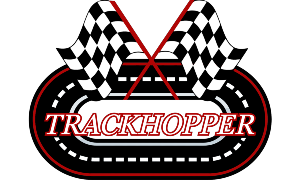NASCAR officials released a more stringent penalty structure for the 2022 Cup Series season on Monday, introducing a list of deterrence options that includes revoking playoff eligibility for the most severe violations.
The three-tiered system – from L1 to L3 – was added to the Cup Series Rule Book on Monday. The format was put in place before the debut of the Next Gen car model, which hits the track in season-opening events next month.
The structure reserves its harshest L3 penalty options for the tampering and counterfeiting of Next Gen single-source vendor parts. Those infractions join testing policy violations with infractions in three significant off-limits areas – engine, tires, fuel – under the L3 umbrella. That heading includes the deduction of Cup Series points, playoff points, crewmember suspensions and postseason bans among the penalty options.
“To make sure that all of those things stay above board, there’s going to have to be a culture shift from the way that the teams and NASCAR, for that matter, have done business,” said Scott Miller, NASCAR Senior Vice President of Competition. “So this deterrence model has more meat in it, more meaningful penalties, but I think we all thought that it was it was time for this with the introduction of the new car.”
Penalties for lesser violations found in pre-race inspection during a race weekend remain largely intact. For all other in-race and post-race infractions at the L1 level and up, NASCAR competition officials will disqualify the offending teams and consider the following options:
L1 penalties
Violations include:
- Post-race failure to meet minimum weight requirements
- Team source parts not meeting the NASCAR Rules, but not rising to a higher-level penalty
- Failures in the submission and approval process of parts
Penalty options include:
- Points deductions: 20-75 points
- Playoff points deductions: 1-10 points
- Suspension of one crewmember for 1-3 races
- Fines: $25,000-$100,000.
L2 penalties
Violations include:
- Modifications to single-source Next Gen parts not rising to L3 level infractions
- Violations of engine-seal requirements
- Unapproved alterations to the engine control system wiring
- Use of unapproved on-board electronics
Penalty options include:
- Points deductions: 75-120 points
- Playoff points deductions: 10-25 points
- Suspension of one or two crewmembers for 4-6 races
- Fines: $100,000-$250,000
L3 penalties
Violations include:
- Counterfeiting or modifying single-source Next Gen parts
- Engine infractions (cubic-inch displacement, compression ratio, assembly and internal components) and performance enhancements (nitrous oxide, vacuum leaks)
- Engine Control Unit (ECU) or Electronic Fuel Injection (EFI) violations
- Modifying tires and/or fuel
- Violations of private team testing policy
Penalty options include:
- Points deductions: 120-180 points
- Playoff points deductions: 25-50 points
- Suspension of one or two crewmembers for six races
- Fines: $250,000-$500,000
- Nullifying postseason eligibility, regardless of wins, points and other qualifying criteria
- One-race suspension for the team, in the event of repeat high-level violations
Steve O’Donnell, NASCAR executive vice president and chief racing development officer, had hinted during Next Gen testing last month at Charlotte Motor Speedway that tougher penalties — including postseason bans – were under consideration. “It used to be ‘let’s see what we can get away with and go racing.’ That’s not the case with this car,” O’Donnell said. “We’ve built this car to try and make it as fundamentally sound as possible in collaboration with the teams and then really put it on teams, and drivers and pit crews to go out there and win races.”
Miller reiterated that notion Monday, saying that teams and other industry partners had advocated for the change.
“If there aren’t penalties for altering parts and pieces on the new car, then the business model with new car won’t work,” Miller said. “So it was definitely something that was pressed for hard by the teams, and we’re doing our due diligence for establishing all the inspection procedures and all the different things. The rule book is a completely new rule book with lots more specifics than there were in the past.”
The last major update of the NASCAR deterrence system came before the 2017 season, when the L1-L2 structure replaced the P1-through-P6 penalty classification that dated to 2014. For 2019, competition officials added disqualification as a consequence for post-race L1- and L2-grade penalties. Disqualification remains in place as a penalty this season, with teams in violation relegated to last-place points, stripped of any stage points and playoff points accrued in that race.
Adding playoff points and postseason eligibility to the mix this year provides an extra layer of deterrence. Regular-season points penalties were not as effective a punishment, Miller says, under a postseason format that includes points resets and playoff berths for race winners, regardless of their points totals.
“If a regular-season violation has playoff ramifications to it,” Miller said, “obviously I think the teams will take that much more seriously than they ever did points with the current playoffs and playoff-point format that we have.”
With NASCAR shifting to a single, center-locking lug nut for the larger wheels of the Next Gen car, the rule book’s penalty language for unsecured lugs for the five lug-nut wheels has gone away. What remains is a penalty section for the loss of an improperly installed tire/wheel, which still carries a four-race suspension for the offending team’s crew chief and two additional crewmembers.
Article by Zack Albert for nascar.com

